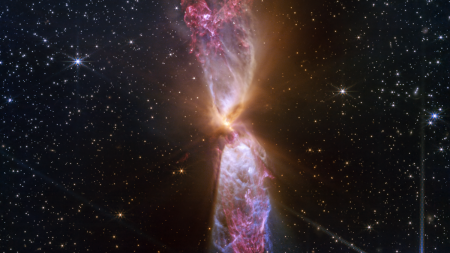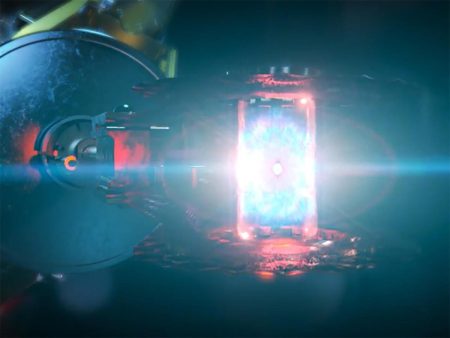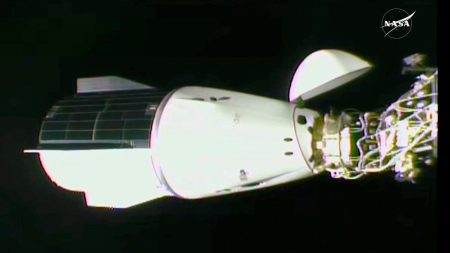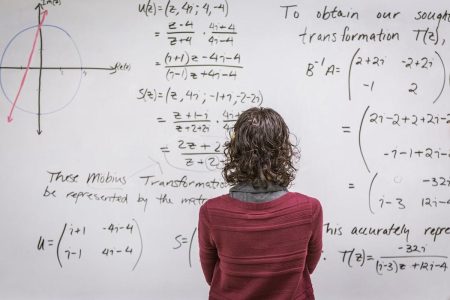Unveiling the Cosmic Dance: Euclid’s Serendipitous Discovery of an Einstein Ring
A Chance Discovery Reveals Cosmic Wonder
In a remarkable stroke of serendipity, the European Space Agency’s (ESA) Euclid mission has unveiled an extraordinary cosmic phenomenon—an Einstein ring. This rare and breathtaking sight was not the mission’s primary objective but a fortunate byproduct of its calibration phase. Launched in July 2023, Euclid is on a quest to explore the unseen aspects of our universe, delving into the mysteries of dark matter and dark energy. As it fine-tuned its instruments, it captured an image of the galaxy NGC 6505, revealing an unexpected treasure: a luminous ring of light bent by gravity, known as an Einstein ring.
Understanding Einstein Rings: Nature’s Magnifying Glass
Einstein rings are a rare manifestation of gravitational lensing, a phenomenon predicted by Albert Einstein’s theory of relativity. When a massive foreground galaxy aligns with a more distant galaxy, the foreground’s gravity bends the light from the distant galaxy, creating a glowing ring. This cosmic lensing acts as a natural magnifier, revealing details of distant galaxies that would otherwise remain beyond our telescopes’ reach. The ring discovered by Euclid is particularly significant, as it provides a clear and detailed view of a phenomenon observed only a handful of times in such clarity.
The Discovery: A Glimpse of the Unknown
The Einstein ring discovered by Euclid surrounds NGC 6505, a galaxy 590 million light-years from Earth. The ring itself is the distorted light from a much more distant galaxy, an astonishing 4.42 billion light-years away—a galaxy so remote it remains unnamed. Euclid’s advanced instruments captured this phenomenon with unprecedented detail, offering scientists a unique opportunity to study the mass and composition of both galaxies involved. This discovery not only expands our understanding of gravitational lensing but also opens new avenues for investigating the universe’s hidden forces.
Unveiling the Secrets of the Universe
The implications of this discovery are profound. Einstein rings are more than just a visual marvel; they are tools for probing the universe’s most enigmatic aspects. Dark matter, an invisible form of matter constituting 85% of the universe’s total matter, can be indirectly detected through gravitational lensing. By analyzing the size and shape of Einstein rings, scientists can infer the presence and distribution of dark matter, refining our understanding of the universe’s structure and evolution.
Euclid’s Vision: A New Era in Space Exploration
Euclid’s role in this discovery underscores its groundbreaking capabilities. Designed to observe billions of galaxies across a vast expanse of the sky, Euclid is poised to revolutionize our understanding of the cosmos. Its ability to detect subtle details in gravitational lensing events will likely uncover many more Einstein rings, offering unprecedented insights into dark matter and dark energy. This mission not only expands our knowledge but also inspires awe at the universe’s complexity and beauty.
The Future of Cosmic Exploration
As Euclid continues its six-year mission, it promises to unveil more secrets of the universe. Each discovery, like the Einstein ring around NGC 6505, reminds us of the vast mysteries waiting to be unraveled. This serendipitous find is a testament to human ingenuity and curiosity, inspiring future generations to explore the cosmos. In the words of Bruno Altieri, who first spotted the ring, such discoveries are a reminder of the universe’s beauty and the power of human curiosity to uncover its secrets.
This summary captures the essence of Euclid’s discovery, blending scientific detail with the wonder of exploration, and inviting readers to ponder the universe’s endless mysteries.









